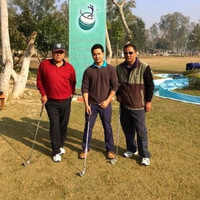Background: Determining the prevalence of pre-treatment HIV drug resistance (PDR) is important to assess the effectiveness of first-line therapies. To determine PDR prevalence in Papua New Guinea (PNG), we conducted a nationally... more
Background: Determining the prevalence of pre-treatment HIV drug resistance (PDR) is important to assess the effectiveness of first-line therapies. To determine PDR prevalence in Papua New Guinea (PNG), we conducted a nationally representative survey.Methods: We used a two-stage cluster sampling method to recruit HIV treatment initiators with and without prior exposure to antiretroviral therapies (ART) in selected clinics. Dried blood spots were collected and tested for PDR.Results: A total of 315 sequences were available for analysis. The overall PDR prevalence rate was 18.4%. The prevalence of PDR to non-nucleoside analog reverse-transcriptase inhibitors (NNRTIs) was 17.8% and of PDR to nucleoside reverse transcriptase inhibitors (NRTIs) was 6.3%. The PDR prevalence rate among people reinitiating ART was 42.4%. Conclusions: PNG has a high PDR prevalence rate, especially to NNRTI-based first-line therapies. Our findings suggest that removing NNRTIs as part of first-line treatment i...
Research Interests:
Objectives: To estimate prevalence levels of and time trends for active syphilis, gonorrhoea and chlamydia in women aged 15–49 years in four countries in the Pacific (Fiji, the Federated States of Micronesia [FSM], Papua New Guinea [PNG]... more
Objectives: To estimate prevalence levels of and time trends for active syphilis, gonorrhoea and chlamydia in women aged 15–49 years in four countries in the Pacific (Fiji, the Federated States of Micronesia [FSM], Papua New Guinea [PNG] and Samoa) to inform surveillance and control strategies for sexually transmitted infections (STIs). Methods: The Spectrum-STI model was fitted to data from prevalence surveys and screenings of adult female populations collected during 1995−2017 and adjusted for diagnostic test performance and to account for undersampled high-risk populations. For chlamydia and gonorrhoea, data were further adjusted for age and differences between urban and rural areas. Results: Prevalence levels were estimated as a percentage (95% confidence interval). In 2017, active syphilis prevalence was estimated in Fiji at 3.89% (2.82 to 5.06), in FSM at 1.48% (0.93 to 2.16), in PNG at 3.91% (1.67 to 7.24) and in Samoa at 0.16% (0.07 to 0.37). For gonorrhoea, the prevalence i...
Research Interests:
Research Interests:
Research Interests:
Papua New Guinea is a Pacific Island nation of 7.3 million people with an estimated HIV prevalence of 0.8%. ART initiation and monitoring are guided by clinical staging and CD4 cell counts, when available. Little is known about levels of... more
Papua New Guinea is a Pacific Island nation of 7.3 million people with an estimated HIV prevalence of 0.8%. ART initiation and monitoring are guided by clinical staging and CD4 cell counts, when available. Little is known about levels of transmitted HIV drug resistance in recently infected individuals in Papua New Guinea. Surveillance of transmitted HIV drug resistance in a total of 123 individuals recently infected with HIV and aged less than 30 years was implemented in Port Moresby (n = 62) and Mount Hagen (n = 61) during the period May 2013-April 2014. HIV drug resistance testing was performed using dried blood spots. Transmitted HIV drug resistance was defined by the presence of one or more drug resistance mutations as defined by the World Health Organization surveillance drug resistance mutations list. The prevalence of non-nucleoside reverse transcriptase inhibitor transmitted HIV drug resistance was 16.1% (95% CI 8.8%-27.4%) and 8.2% (95% CI 3.2%-18.2%) in Port Moresby and Mo...
Research Interests:
Research Interests:
Research Interests:
Research Interests:
Documented experiences from India on the implementation of syphilis screening in large-scale HIV prevention programs for "key populations at higher risk" (KPs) are limited. Avahan is a large-scale HIV prevention program... more
Documented experiences from India on the implementation of syphilis screening in large-scale HIV prevention programs for "key populations at higher risk" (KPs) are limited. Avahan is a large-scale HIV prevention program providing services to more than 300,000 KPs in six high HIV prevalence states of India since 2004. Avahan clinics provide a sexually transmitted infection service package which includes bi-annual syphilis screening. The trends in the coverage of syphilis screening among Avahan clinic attendees were studied retrospectively. Screening was performed using either the Rapid Plasma Reagin (RPR) test or point-of-care immunochromatographic strip test (ICST). Clinic records from 2005 to 2009 were collated in an individual tracking database and analyzed with STATA-10. Initially the coverage of syphilis screening (2.6% in 2005) was constrained by the availability and operational complexity of the RPR test. After its introduction in 2007, the use of ICST for screening ...
